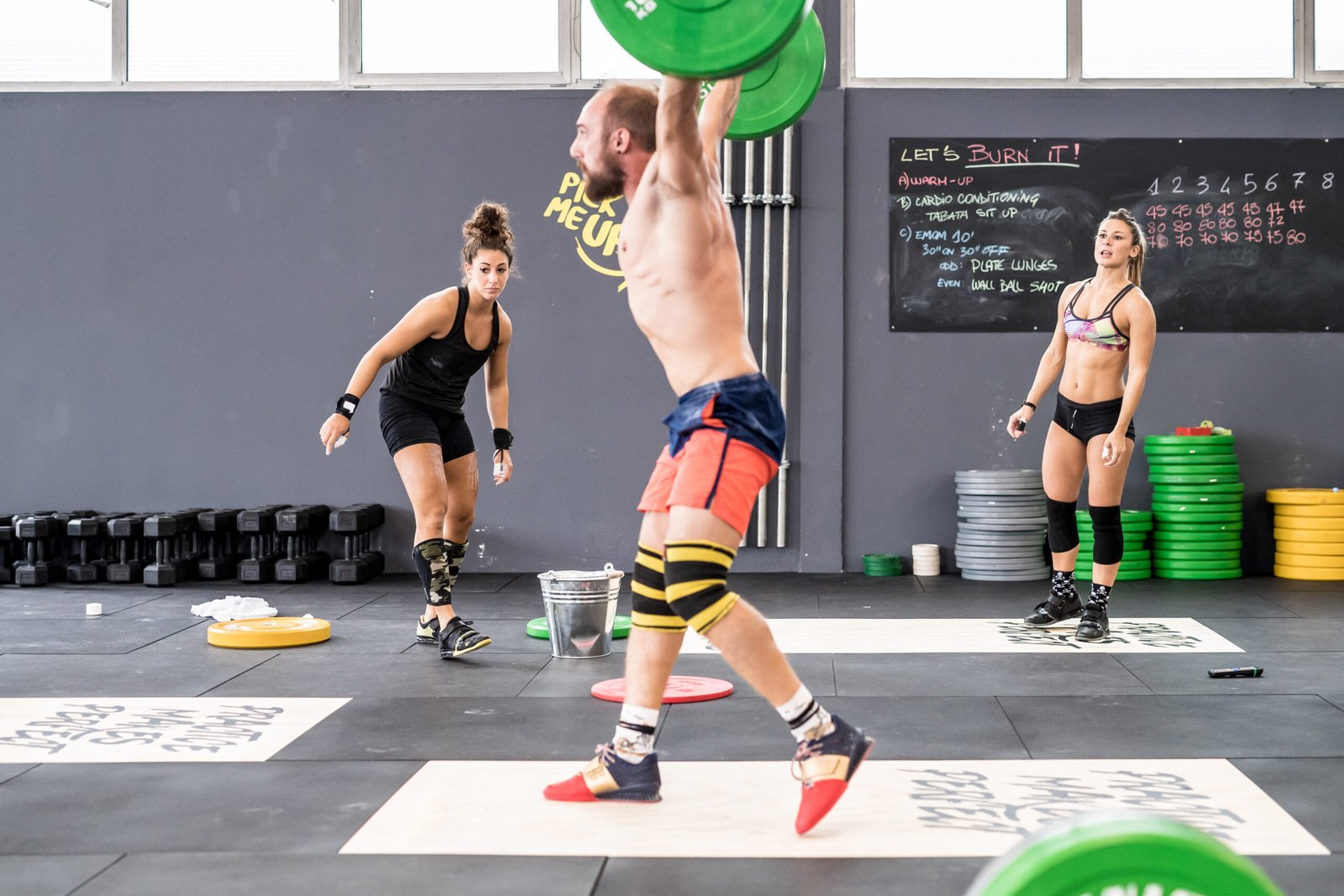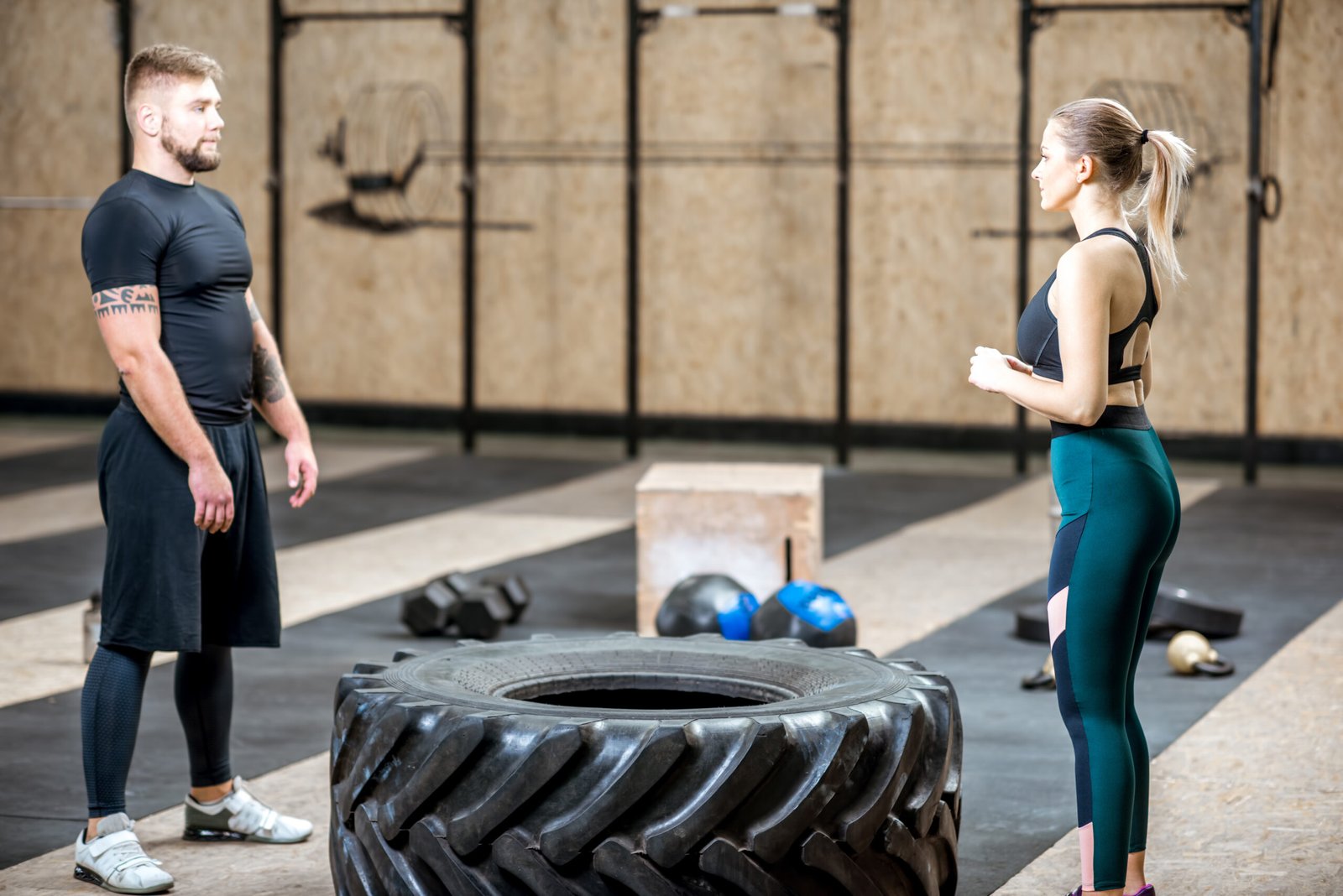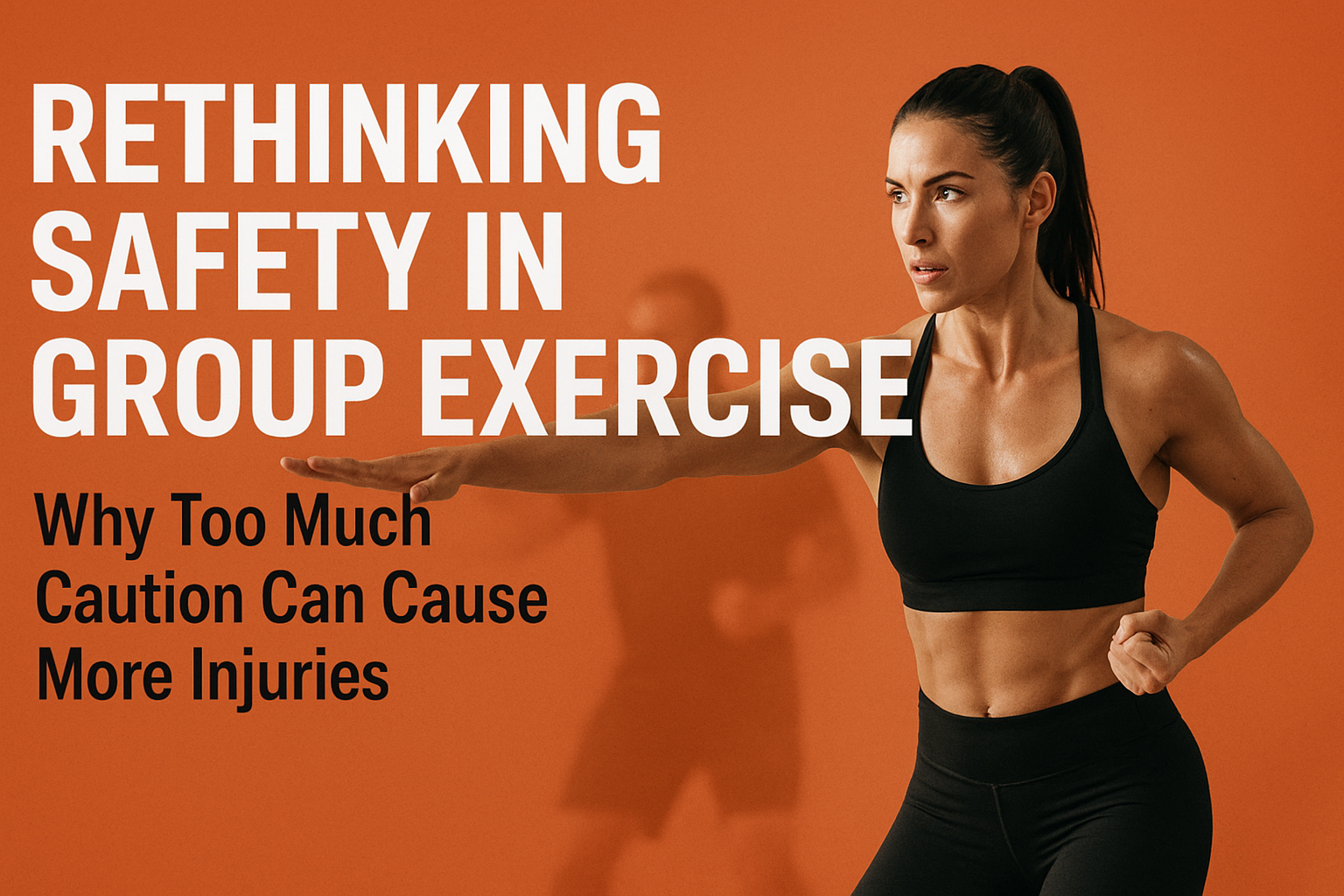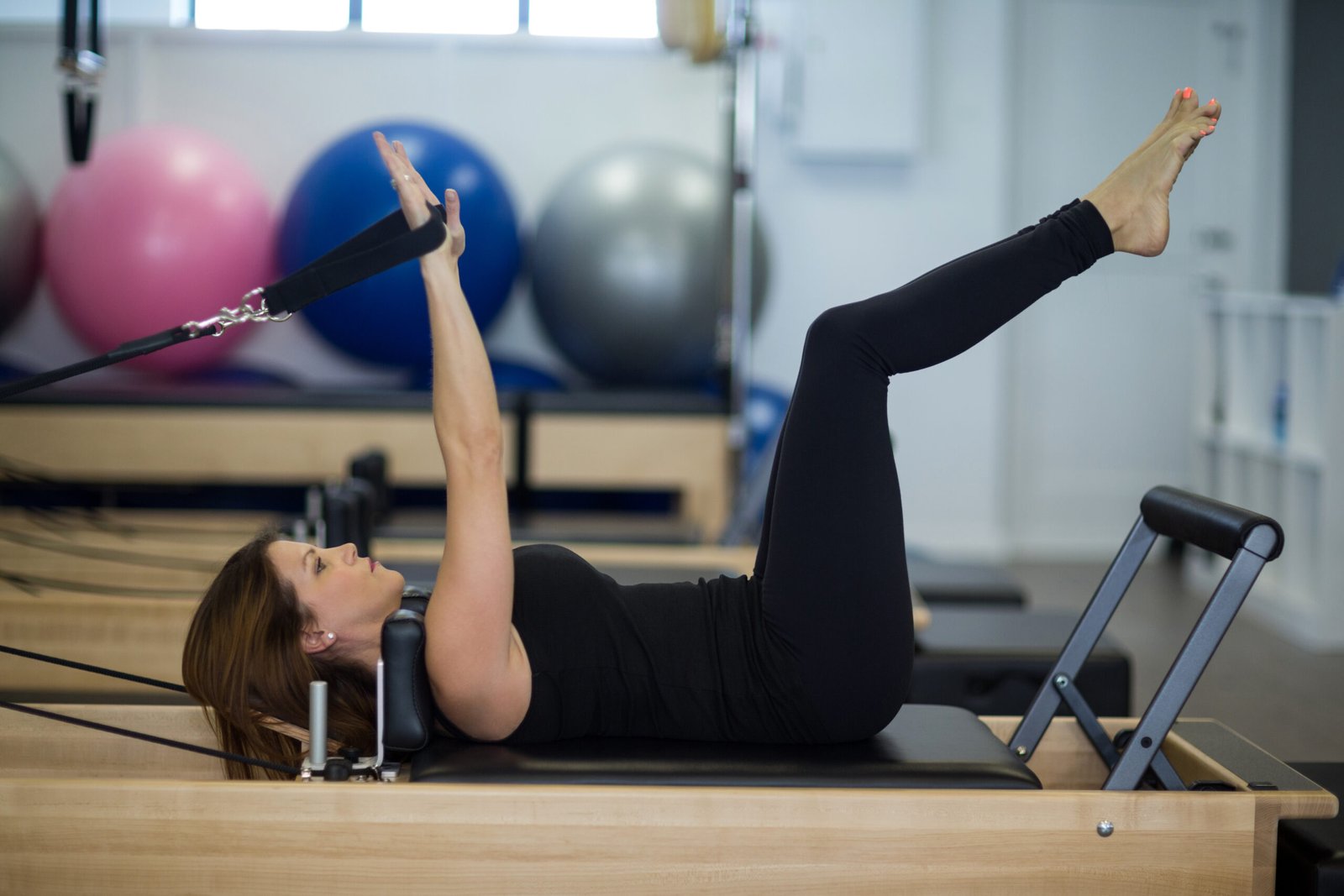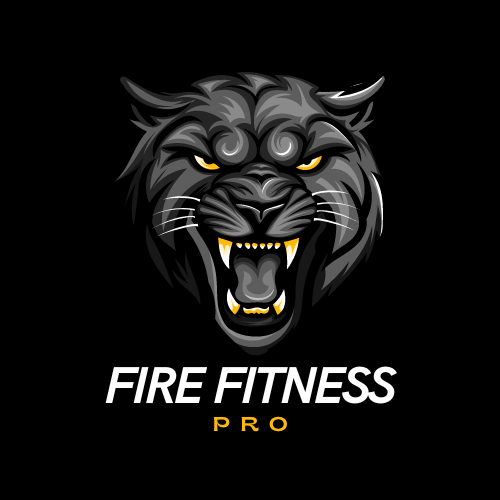CrossFit isn’t just an intense workout regime embraced by fitness enthusiasts worldwide. It’s also an effective rehabilitation tool that has transformed the lives of many injured athletes. This blog post will explore how CrossFit aids in the recovery process, sharing inspiring stories of athletes who have successfully reclaimed their physical and mental strength. By integrating CrossFit as a rehabilitation tool, these individuals have navigated their way back to health and positivity, underscoring the potential of this comprehensive fitness program.
The Benefits of CrossFit During Recovery
CrossFit offers numerous benefits for athletes recovering from injuries, offering a multifaceted approach that addresses both physical and mental recovery. One of the most compelling aspects of CrossFit is its ability to enhance physical recovery through strength and agility exercises. These exercises are instrumental in rebuilding muscle mass and improving joint flexibility, which is crucial for injured athletes aiming to regain their previous fitness levels. The dynamic and functional nature of CrossFit workouts ensures that athletes can recover more efficiently and effectively from injuries.
In addition to physical benefits, CrossFit also significantly boosts mental resilience. The supportive community environment and challenging nature of the workouts help athletes cultivate a strong mental fortitude. This mental strength is essential during rehabilitation, as it encourages consistency, perseverance, and a positive attitude towards recovery. The collective motivation from fellow CrossFitters creates an atmosphere of encouragement and shared goals.
| Benefit | Description | Key Areas Impacted |
|---|---|---|
| Muscle Mass Recovery | CrossFit’s strength exercises help rebuild muscle mass after injury. | Muscles, Strength |
| Joint Flexibility | CrossFit focuses on exercises that improve joint mobility and flexibility, essential for injury recovery. | Joints, Flexibility |
| Agility Development | Dynamic movements improve agility, assisting athletes in regaining coordination and balance. | Coordination, Agility |
| Mental Resilience | CrossFit promotes a strong mental attitude by setting challenging goals and being part of a supportive community. | Mental Strength, Focus |
| Customizable Routines | Workouts can be adapted based on an athlete’s injury, ensuring safe and gradual rehabilitation. | Individual Needs, Safe Progression |
– Aids muscle mass recovery and joint flexibility
– Encourages community support and motivation
– Develops physical agility while boosting mental fortitude
What’s more, CrossFit routines can be tailored to accommodate each athlete’s injuries, ensuring a safe and effective rehabilitation process. The customizable nature of CrossFit allows athletes to focus on core movements and adjust intensity levels as needed. This flexibility is particularly beneficial for injured athletes, enabling them to work within their physical limitations while gradually building stronger capabilities.
Many success stories have emerged from athletes who have reintegrated CrossFit into their rehabilitation. These narratives often emphasize how CrossFit’s holistic approach—not just the physical workouts, but also the supportive community and mental strengthening—contributes to overall recovery and promotes long-term well-being. By combining both physical and mental exercises, CrossFit practitioners experience not only a return to their previous forms but often surpass their pre-injury conditions.
– Customizable routines for individual injury needs
– Success stories highlight improved physical and mental states
– Holistic approach fosters long-term health and strength
Tips to Consider When Returning to CrossFit
Returning to CrossFit after an injury requires a strategic approach to ensure safety and maximize recovery. It’s essential to prioritize a gradual return to intense workouts, focusing on listening to your body’s cues to avoid overexertion. This gradual approach prevents unnecessary setbacks and promotes sustainable progress, enabling athletes to regain strength progressively without risking further injury.
Consulting with healthcare professionals or CrossFit-certified coaches always proves beneficial. These experts can tailor workouts to accommodate your specific injuries, ensuring exercises support—not hinder—your recovery journey. Their guidance ensures that athletes are performing movements correctly and adjusting intensity levels according to their needs, safeguarding against re-injury.
– Gradually ease back into workouts
– Consult professionals for personalized workout plans
– Ensure exercises are aligned with recovery objectives
Focusing on technique over intensity is crucial when returning to CrossFit. Proper form prevents re-injury and builds a solid foundation for advanced movements. This emphasis on technique helps athletes develop a deeper understanding of their bodies and establish better control over their physical limits, which is vital during rehabilitation.
Incorporating mobility exercises and prioritizing adequate rest within your regimen further enhances healing. These practices allow for continued muscle recovery, flexibility improvements, and performance enhancement. Lastly, fostering a supportive community environment bolsters motivation and provides a platform for sharing experiences, which is invaluable during the recovery process.
– Prioritize form and technique
– Integrate mobility exercises and rest
– Engage with a supportive community
Talk to Your Doctor

Before embarking on CrossFit as a rehabilitation tool, it’s imperative to consult with a healthcare professional. This step ensures safety and allows for program customization to meet individual needs. Doctors provide valuable insights into exercise types and intensity appropriate for specific injuries or conditions.
Open communication between the athlete, doctor, and CrossFit coach is essential. This trio partnership tailors a rehabilitation plan that aligns medical advice with fitness goals, minimizing risks while maximizing the potential for successful recovery. Regular medical assessments track progress and provide crucial adjustments to the rehabilitation plan as needed.
– Consult healthcare professionals pre-program
– Tailor plans with insights from doctors
– Conduct ongoing medical assessments
Create a Plan With Your Coach
Partnering with a knowledgeable CrossFit coach personalizes your rehabilitation program, ensuring it fits your specific recovery needs. Coaches help track progress, adjust exercises, and set realistic goals aligned with your recovery journey. This structured approach allows for safe progression and eventual return to full fitness.
Coaches also serve as motivators and accountability partners. Their role is crucial in maintaining a positive mindset throughout rehabilitation, often inspiring athletes as they witness their progress. Numerous success stories highlight the strength of this coach-athlete bond, emphasizing its critical role in effective recovery and regained strength.
– Develop personalized plans with coaches
– Track progress and adjust exercises
– Coaches provide motivation and accountability
Pain Is Your Guide

Pain serves as an essential indicator during rehabilitation, guiding athletes to understand their physical boundaries and avoid further injury. By listening to their bodies, athletes can discern safe pain from signals that warrant rest or adjustment. This understanding fosters effective and safe recovery habits.
It’s crucial to adjust CrossFit exercises according to individual pain thresholds, allowing for personalized rehab experiences. Athletes also learn to distinguish between different pain types, improving mental resilience and facilitating better communication with coaches to ensure optimal recovery strategies. Monitoring pain levels helps track progress, with decreasing discomfort indicating physical improvement.
– Use pain as a guide to monitor limits
– Adjust exercises to align with pain thresholds
– Track progress through pain levels
Be Patient
Patience is a critical factor in the rehabilitation process, as illustrated in numerous success stories of athletes who have overcome injuries through steady CrossFit journeys. CrossFit encourages a positive mindset, teaching athletes to focus on gradual improvements rather than quick results. This approach underlines the importance of perseverance and patience, essential virtues that guide athletes through their healing journey.
The supportive community further amplifies the importance of patience, offering encouragement and shared experiences that help keep morale high. Athletes celebrate each small victory together, creating a culture of mutual support that enriches the recovery journey.
– Emphasize steady progress over quick results
– Foster support and patience through community
– Celebrate small victories along the recovery path
Focus on the Other 23 Hours of the Day
| Tip | Importance | Benefits |
|---|---|---|
| Optimize Lifestyle Outside Workouts | Ensure rest, nutrition, and mental health are prioritized outside of training. | Reduces fatigue, accelerates healing |
| Emphasize Rest and Nutrition | Adequate recovery time and proper diet are essential to supplement the physical recovery efforts. | Supports muscle repair, improves energy levels |
| Mental Well-being | Manage stress and keep a positive outlook to complement physical recovery. | Enhances overall recovery, increases motivation |
| Incorporate Flexibility Exercises | Include yoga, stretching, or mobility drills to keep the body flexible and avoid stiffness. | Prevents further injury, improves joint health |
| Maintain Consistency | Keep a regular routine and engage in supportive practices to enhance recovery. | Builds long-term resilience, fosters progress |
CrossFit is just one part of an effective rehabilitation plan. Lifestyle choices outside of workout sessions play a vital role in recovery. Emphasizing rest, nutrition, and mental well-being is crucial for optimizing recovery results. These elements contribute to healing, energy levels, and overall health, complementing the physical demands of CrossFit.
Injured athletes can optimize their rehabilitation through disciplined routines and healthy habits. This holistic approach not only accelerates recovery but also enhances long-term well-being. Success stories of athletes who have transformed their lives underscore the importance of focusing on healthy daily habits alongside their CrossFit regimen.
– Optimize lifestyle outside of workouts
– Emphasize rest, nutrition, and mental health
– Cultivate a holistic approach to recovery
How to Scale
| Exercise | Key Focus | Progression Tips | Recovery Stage |
|---|---|---|---|
| Cleans & Snatches | Build muscle mass, enhance mobility | Start with light weights and focus on technique | Early to Mid-Stage Recovery |
| Squats | Joint health, posture correction | Gradually increase intensity, monitor form carefully | Mid-Stage to Late-Stage Recovery |
| Box Jumps | Lower body strength, explosiveness | Begin with small box heights, increase gradually | Mid-Stage Recovery |
| Running/Double-Unders | Cardiovascular endurance, agility | Start slow, progress by increasing reps and duration | Mid-Stage to Late-Stage Recovery |
| Wall-Ball Shots | Core stability, strength, endurance | Use light medicine balls at first, then increase weight | Mid-Stage to Late-Stage Recovery |
CrossFit’s adaptability is one of its most outstanding features, providing tailored rehabilitation solutions for athletes recovering from various injuries. Scaling exercises ensures that each athlete can safely engage in workouts, matching their specific needs for physical recovery. The support and motivation within the CrossFit community help athletes progress positively, building both physical and mental resilience.
Trainers work diligently with athletes to modify exercises, creating a structured environment that promotes gradual recovery. This personalized attention provides transformative results, allowing athletes to surpass the limitations caused by their injuries. Success stories validate that scaling works, highlighting the comprehensive well-being achieved through targeted CrossFit programs.
– Tailor exercises to accommodate specific injuries
– Foster community support and motivation
– Promote physical resilience through tailored programs
Cleans and Snatches
Cleans and snatches are foundational CrossFit exercises offering both strength and coordination benefits that prove instrumental during rehabilitation. These dynamic movements build muscle mass and improve mobility, essential for athletes recovering from injuries. Their technical nature requires focus and precision, bolstering mental resilience.
Highlighted success stories reveal that integrating cleans and snatches into rehab routines can accelerate the recovery process, turning functional challenges into triumphs. These exercises contribute immensely to regaining confidence and functional fitness, proving their effectiveness and necessity in CrossFit rehabilitation.
– Rebuild muscle mass and improve mobility
– Enhance focus and mental resilience
– Turn challenges into triumphs through technique
Squats
Squats, a fundamental CrossFit exercise, offer significant rehabilitation benefits by enhancing mobility and rebuilding overall muscle strength. Injured athletes use squats to correct posture and improve joint health, critical factors in preventing further injuries.
Progressive squat variations allow athletes to personalize routine intensity according to their recovery stages. The structured practice of squats helps athletes build confidence and reach new fitness milestones, aligning with long-term rehabilitation success narratives.
– Enhance mobility, posture, and joint health
– Customize squat routines for different recovery stages
– Achieve milestones through structured and consistent practice
Box Jumps

Box jumps are a crucial component of CrossFit rehabilitation, promoting lower body strength and explosiveness. Engaging multiple muscle groups, these exercises bolster coordination and balance, which are essential during injury recovery.
With a focus on proper technique and gradual difficulty escalation, athletes safeguard against re-injury while experiencing significant agility gains. Success stories highlight the renewed motivation and sense of accomplishment athletes find when incorporating box jumps into their rehabilitation.
– Enhance lower body strength and explosiveness
– Improve coordination and balance
– Experience renewed motivation through safe progression
Running/Double-Unders
Double-unders and running, fundamental components of CrossFit, boost coordination and cardiovascular endurance for injured athletes. Double-unders, with their low-impact nature, are particularly effective in improving agility without excessive strain.
Athletes encountering these exercises in their rehabilitation journey have reported enhanced strength and motivation, proving the mental and physical resilience nurtured through CrossFit. Mastery of these movements often marks significant recovery milestones, demonstrating their value in turning physical limitations into triumphs.
– Improve coordination and endurance through double-unders
– Enhance stamina and muscle endurance with running
– Achieve mental and physical resilience through practice
Wall-Ball Shots
Wall-ball shots, combining a front squat with an overhead throw, are an integral CrossFit exercise aiding in rehabilitation. This full-body workout targets multiple muscle groups, enhancing mobility and core stability crucial for athletes recovering from injuries.
Wall-ball shots’ scalable nature allows safe adaptation across various recovery stages. Success stories reinforce how continued practice of this exercise builds confidence and performance levels, supporting athletes’ return to fitness.
– Enhance strength, endurance, and coordination
– Safely adapt wall-ball shots to recovery stages
– Build confidence and stability
How can CrossFit be used as an effective rehabilitation tool for injured athletes?
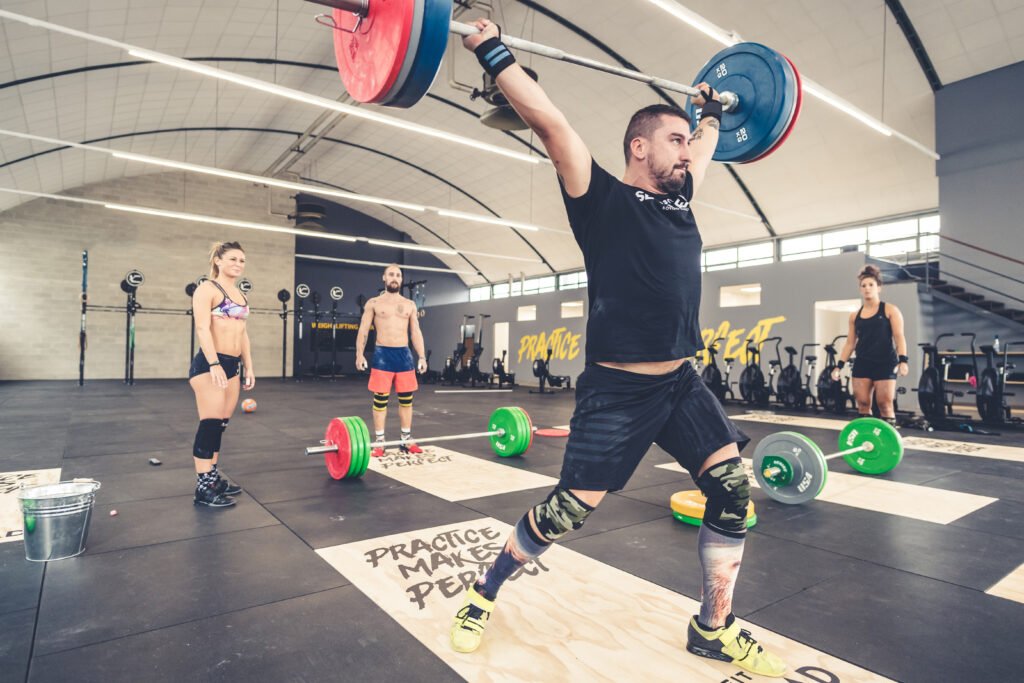
CrossFit offers a structured, scalable exercise regimen tailored to the specific needs of injured athletes. By gradually rebuilding strength and mobility, this approach ensures effective rehabilitation outcomes. CrossFit’s diversity in functional movements targets multiple muscle groups, creating a balanced recovery.
Beyond physical benefits, CrossFit fosters a supportive community offering emotional support and motivation—critical elements for mental recovery. Certified trainers can collaborate with healthcare professionals to ensure safe, effective rehabilitation exercises, significantly reducing re-injury risks. Real-life success stories exemplify CrossFit’s potential in not only facilitating recovery but enhancing athletic performance post-injury.
– Structured and scalable exercise routines
– Comprehensive physical targeting for balanced recovery
– Strong community support fosters positive mindset
What are some success stories of athletes who have used CrossFit for recovery?
Numerous athletes attribute their successful recoveries to CrossFit, both in physical rehabilitation and mental resilience. CrossFit’s emphasis on adaptable, functional movements has been key in rebuilding strength post-injury. Many success narratives highlight how athletes return to competitive sports stronger and more resilient, crediting their CrossFit-enhanced rehabilitation journeys.
Athletes report not only improved fitness and mobility but also heightened confidence after incorporating CrossFit into their recovery strategies. Moreover, the powerful supportive community aspect drives motivation, helping injured athletes overcome and thrive through their recoveries.
– Enhanced post-injury strength and resilience
– Improved overall fitness and confidence
– Motivational community support pivotal in athlete recovery
Are there specific CrossFit exercises recommended for different types of injuries?
When dealing with injuries, it’s crucial to tailor your fitness routine to not only avoid exacerbating the injury but also to promote healing and strengthen the affected area. CrossFit, known for its high-intensity and varied workouts, can be adapted to accommodate and even benefit individuals recovering from certain injuries. Below, we explore specific CrossFit exercises that can be recommended based on different types of injuries:
| Injury Type | Recommended Exercises | Purpose | Key Benefits |
|---|---|---|---|
| Shoulder Injuries | – Ring Rows – Air Squats – Single-Arm Dumbbell Presses | Maintain strength without overloading the shoulder | Builds upper body strength, maintains mobility |
| Knee Injuries | – Swimming/Rowing – Box Step-Ups – Deadlifts (with caution) | Strengthen surrounding muscles while minimizing strain | Improves leg strength, stabilizes knees |
| Lower Back Injuries | – Planks – Bird Dogs – Goblet Squats | Strengthen core and lower back without strain | Improves core stability, reduces lower back pain |
| Wrist Injuries | – Farmers Walks – Push-Ups (Knuckles/Parallettes) – Kettlebell Swings | Strengthen grip while reducing wrist stress | Enhances grip strength, reduces wrist strain |
| Ankle Injuries | – Seated/Leg Extensions – Resistance Band Exercises | Improve ankle stability and range of motion | Strengthens ankle and reduces stiffness |
1. Shoulder Injuries
For those with shoulder injuries, focus should be on exercises that maintain strength and mobility without imposing undue stress on the shoulder joint. Recommended movements might include:
– Ring Rows: These are scalable and help maintain upper body pulling strength while providing control over range and intensity.
– Air Squats: By engaging lower body muscles, air squats help maintain fitness without involving the injured shoulder.
– Single-Arm Dumbbell Presses: Using lighter weights and controlling the movement ensures strengthening without straining the shoulder.
2. Knee Injuries
Strengthening surrounding muscles and avoiding high-impact movements are key when dealing with knee injuries. Suitable exercises include:
– Swimming or Rowing: Both provide cardio benefits and involve the legs without the impact stress associated with running.
– Box Step-Ups: Focus on controlled, slow movements to engage the quads and glutes, thereby reinforcing knee stability.
– Deadlifts (with caution): Emphasizing correct form and using lighter weights can help strengthen hamstrings and glutes, which support the knees.
3. Lower Back Injuries
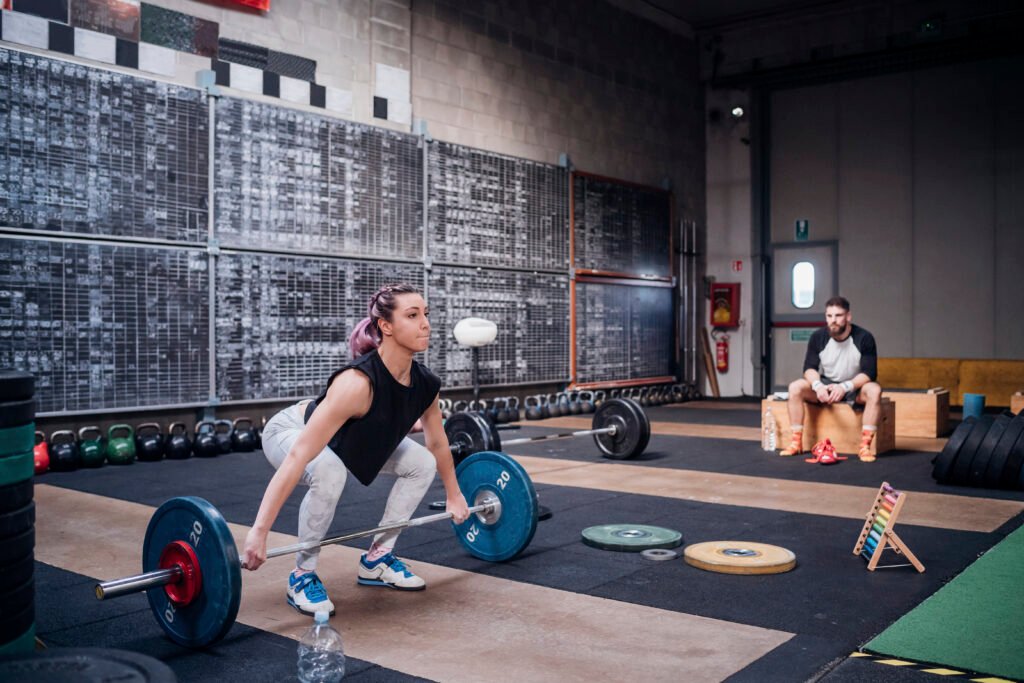
For lower back concerns, it’s crucial to improve core strength while avoiding exercises that involve heavy spine loading. Recommended exercises include:
– Planks: Ideal for building core strength without loading the lower back.
– Bird Dogs: This movement helps in stabilizing the spine by strengthening the core, back, and hips.
– Goblet Squats: Holding a kettlebell or dumbbell close to the chest can help load through the legs while maintaining core engagement, reducing back strain.
4. Wrist Injuries
Dealing with wrist injuries involves minimizing flexion and extension while maintaining grip strength. Suggested exercises are:
– Farmers Walks: Holding weights at the sides, this exercise encourages grip strength without wrist strain.
– Push-Ups from the Knuckles or on Parallettes: These variations minimize wrist extension to reduce stress while maintaining upper body engagement.
– Kettlebell Swings: Ensure you’re using proper form to avoid additional wrist stress, and consider using grips if necessary.
5. Ankle Injuries
It’s essential to focus on stability and range of motion when recovering from ankle injuries. Appropriate exercises may include:
– Seated or Lying Leg Extensions: These help maintain quad strength without impacting the ankle.
– Resistance Band Exercises: Such exercises can increase ankle stability and mobility through cautious, controlled movements.
How should an injured athlete start incorporating CrossFit into their rehabilitation routine?
| Step | Action | Purpose | Tips for Effective Integration |
|---|---|---|---|
| Consult with Healthcare Providers | Meet with doctors or physical therapists to assess injury and rehabilitation needs. | Ensure CrossFit exercises are suitable and safe for the injury. | Share injury details with CrossFit coach for proper adaptations. |
| Understand CrossFit Modifications | Learn how to scale exercises according to injury specifics, such as reducing weight or intensity. | Safeguard against overexertion or strain. | Focus on form, and avoid high-impact exercises initially. |
| Start with Low-Impact Movements | Begin with non-impact exercises such as rowing, cycling, or swimming. | Minimize stress on injured area while maintaining fitness. | Gradually increase intensity as recovery progresses. |
| Emphasize Technique | Focus on proper form and technique rather than the intensity of exercises. | Prevent re-injury and build a solid foundation for recovery. | Work with certified CrossFit coaches to ensure correct form. |
| Gradually Increase Intensity | Start with lighter weights and lower reps, progressively adding intensity as strength returns. | Encourage steady recovery without pushing beyond limits. | Follow a structured progression, tracking improvements. |
| Incorporate Mobility Work | Include stretching, yoga, or mobility drills to maintain flexibility and prevent stiffness. | Enhance joint health and flexibility during recovery. | Set aside time for mobility sessions to increase range of motion. |
| Monitor and Listen to Your Body | Regularly assess pain levels and fatigue, adjusting exercises as necessary. | Ensure safe recovery and avoid overexertion. | Take breaks when needed, and communicate discomfort to the coach. |
| Regularly Reassess with Healthcare Providers | Schedule follow-up appointments to ensure that the rehabilitation is progressing well. | Keep recovery on track and make adjustments to the rehabilitation plan. | Adapt exercises as advised by healthcare professionals. |
When an athlete is recovering from an injury, the road to rehabilitation can be a long and challenging journey. But incorporating CrossFit into the rehabilitation routine can be both beneficial and healing, fostering a safe and structured return to full fitness. Here’s how an injured athlete can begin to integrate CrossFit into their routine effectively:
Consult with Healthcare Professionals
Before delving into CrossFit, it’s crucial for the athlete to consult with healthcare providers, including physicians and physical therapists. These professionals can assess the severity of the injury and provide personalized guidance on what movements to avoid and which ones to include. They can also offer insights on adjusting workout intensity to accommodate current fitness levels and prevent re-injury.
Understand and Adapt the CrossFit Methodology
CrossFit is known for its high-intensity, varied functional movements. While this can be intimidating for someone recovering from an injury, the key lies in understanding and adapting these movements. Scaling workouts is essential. Athletes should work with a certified CrossFit coach who can modify exercises to suit their current physical capabilities. This may mean using lighter weights, adjusting the range of motion, or substituting exercises altogether.
Emphasize Technique and Form
Proper technique is paramount, especially when recovering from an injury. Athletes should focus on mastering the form before gradually increasing intensity. Core stability, controlled movements, and balanced mechanics should be prioritized to protect vulnerable areas of the body and ensure an efficient and safe training session. CrossFit emphasizes functional movements that mimic daily activities, and doing these correctly can aid in strengthening the injured area.
Integrate Gradual Progression
Patience is vital during the rehabilitation process. It’s important for athletes to gradually reintroduce more complex movements or increase the volume and intensity of workouts. Progress should be slow and steady, allowing for incremental improvement over time. This process helps in rebuilding strength, flexibility, and endurance without overwhelming the body or risking further injury.
Focus on Mobility and Flexibility
Incorporating mobility work is an integral part of a CrossFit-informed rehabilitation plan. Athletes should allocate time for stretching, yoga, or other mobility exercises to maintain flexibility, reduce stiffness, and improve joint health. Mobility work helps safeguard against future injuries and enhances the overall performance of functional movements within CrossFit.
Monitor and Adjust
Constant feedback and communication are crucial. Athletes should regularly monitor their body’s response to workouts and adjust their rehabilitation strategies as necessary. Listening to the body’s signals helps in recognizing any adverse reactions early on, ensuring appropriate modifications can be made swiftly. This feedback loop is vital for safely navigating the path to full recovery.
Psychological and Social Support
CrossFit is not just a physical challenge but also a community-oriented practice. Being part of a supportive CrossFit community can provide psychological benefits and emotional encouragement, essential for an athlete dealing with an injury. Engaging with fellow athletes, sharing experiences, and celebrating small victories can improve mental resilience and motivation.
What precautions should be taken when using CrossFit as a rehabilitation method?
| Exercise | Primary Focus | Rehabilitation Benefit | Progression Guidelines |
|---|---|---|---|
| Deadlifts | Full body strength, core stability | Strengthens hamstrings, glutes, and lower back | Start with light weights, focus on form |
| Ring Dips | Upper body strength, shoulder mobility | Targets triceps and shoulders, improves shoulder stability | Begin with assisted dips, gradually increase intensity |
| Push-Ups (Parallettes) | Upper body strength, wrist safety | Builds chest, shoulders, and triceps without excessive wrist strain | Use parallettes to reduce wrist load |
| Kettlebell Swings | Core and hip strength | Enhances hip mobility, strengthens core | Begin with light kettlebells, ensure proper swing technique |
| Box Step-Ups | Leg strength, knee stability | Strengthens quads, glutes, and knees | Start with low box height, increase gradually |
When considering CrossFit as a rehabilitation method, it’s essential to approach it with caution and strategic planning. Although CrossFit can be highly effective in enhancing strength, mobility, and overall fitness, it can also pose risks, especially for those recovering from injuries. Here are some key precautions to consider:
1. Consult with Healthcare Professionals
Before embarking on a CrossFit rehabilitation program, it’s vital to consult with healthcare professionals such as physical therapists, doctors, or certified rehabilitation specialists. These experts can assess your specific needs, understand your injury history, and provide tailored advice on whether CrossFit is an appropriate option. They may also help design a gradual exercise plan that suits your recovery stage.
2. Choose an Experienced CrossFit Coach
Selecting a CrossFit coach with experience in rehabilitation is crucial. Such coaches are equipped with the knowledge to adapt workouts to accommodate your limitations while ensuring safety. They can offer personalized modifications to movements and techniques to prevent further injury and facilitate a balanced recovery process.
3. Emphasize Proper Technique
Incorporating proper technique is fundamental in CrossFit, particularly when used for rehabilitation. Incorrect form can exacerbate existing injuries or create new ones. Emphasize quality over quantity—focus on precise movements, controlled breathing, and maintaining stability throughout exercises. Coaches should provide continuous feedback to ensure techniques are followed correctly.
4. Begin with Low-Impact Exercises
Transitioning into CrossFit should start with low-impact exercises to minimize stress on the body. These might include activities like cycling, rowing, or swimming, which offer cardiovascular benefits without placing excessive strain on joints and muscles. Gradually incorporate more dynamic movements as your body becomes stronger and more resilient.
5. Monitor Pain and Discomfort Levels
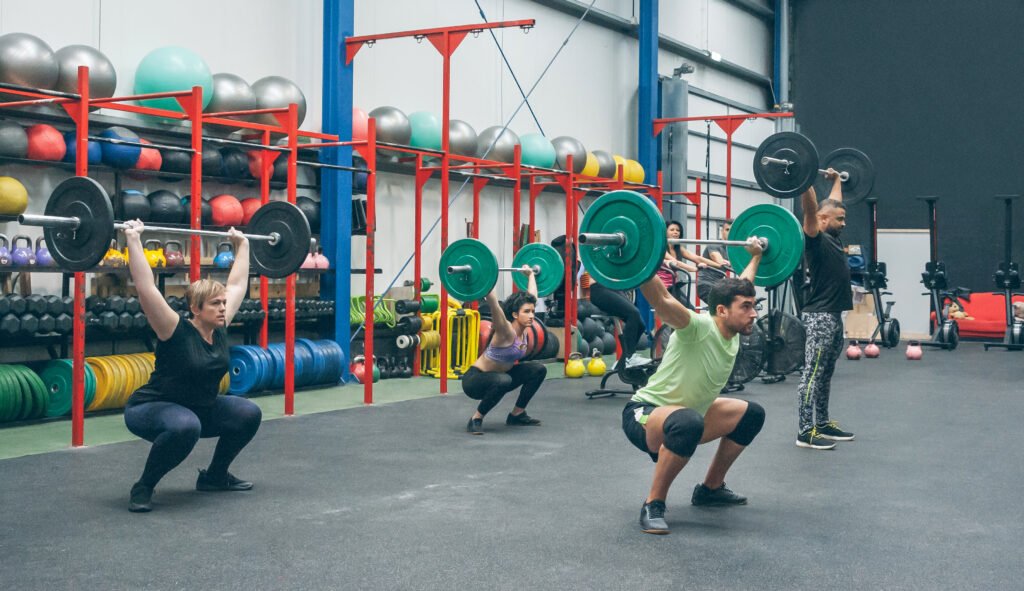
Listening to your body is essential during any rehabilitation process. Monitor pain and discomfort levels closely. If an exercise causes pain or seems to aggravate an injury, cease that activity immediately and consult your coach or healthcare provider. It’s crucial to differentiate between normal muscle soreness and pain indicative of potential harm.
6. Progress Gradually
Recovery is a gradual process; hence, it’s important to set realistic goals and progress slowly. Gradually increase the intensity, complexity, and volume of exercises as your body allows. Avoid the temptation to rush back into pre-injury levels of activity, as this can lead to setbacks.
7. Incorporate Recovery and Rest
In any rehabilitation process, recovery and rest are as important as the exercise itself. Ensure to incorporate adequate rest days into your CrossFit schedule to allow muscles and tissues to repair. Practices such as stretching, foam rolling, and engaging in activities like yoga or meditation can enhance recovery and reduce muscle tension.
8. Stay Attuned to Emotional Well-being
The mental and emotional aspects of recovery are often overlooked but equally significant. CrossFit as a rehabilitation method involves commitment and patience, which can be challenging. Stay positive and maintain motivation.
In conclusion, the use of CrossFit as a rehabilitation tool has emerged as a powerful approach, offering injured athletes a unique combination of structured workouts, community support, and holistic recovery. The myriad of success stories from athletes who have safely navigated their rehabilitation journeys through CrossFit highlight its efficacy in promoting strength, flexibility, and mental resilience. By adapting scalable routines to individual capabilities and focusing on functional movements, CrossFit not only aids in physical recovery but also fosters an empowering environment where athletes can regain confidence and rediscover their passion for fitness. As more professionals and rehabilitation specialists recognize its potential, CrossFit could continue to reshape recovery methodologies, offering hope and inspiration for athletes worldwide who seek a dynamic path back to health and performance.


